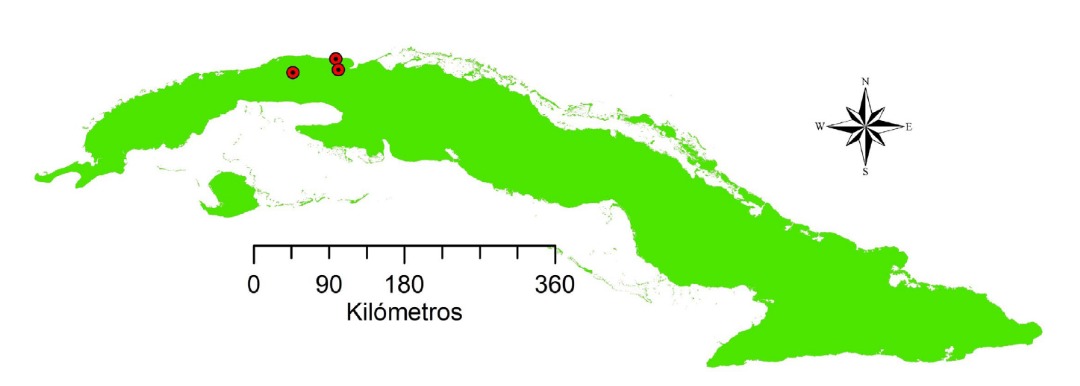Recovery Strategy for Leptocereus scopulophilus
Keywords:
Critically Endangered, threatened species, Caribbean endemic genus, endemism, cactus, threatsAbstract
Leptocereus scopulophilus is a columnar, tree-like cactus endemic to Mayabeque and Matanzas in western Cuba. The species is considered Critically Endangered due to its limited area of occupancy. It has been heavily affected by quarrying, which led to its extinction at its type locality, Loma Somorrostro. Landslides, fires, fungal attacks, livestock grazing, and invasive exotic species are the main threats faced by the species. Given its critical conservation status, this recovery strategy aims to: achieve a positive population growth for L. scopulophilus by establishing new subpopulations within the next 10 years, reduce the degradation of the Puerto Escondido subpopulation, and include the localities of Puerto Escondido and Pan de Matanzas within the Canasí-Puerto Escondido and Lomas de Galindo Managed Floristic Reserves, respectively. The primary challenges for this strategy include the fact that the species' distribution area is owned by entities with interests misaligned with conservation. These areas lack conservation zones, and there is a high probability that such localities cannot be included within protected areas. Another limiting factor is the absence of local leaders to support recovery actions. The success of this strategy also depends on ensuring the continuity of its implementation. Achieving the recovery of the species and meeting the proposed objectives requires sustaining actions for at least a decade to observe lasting changes.




